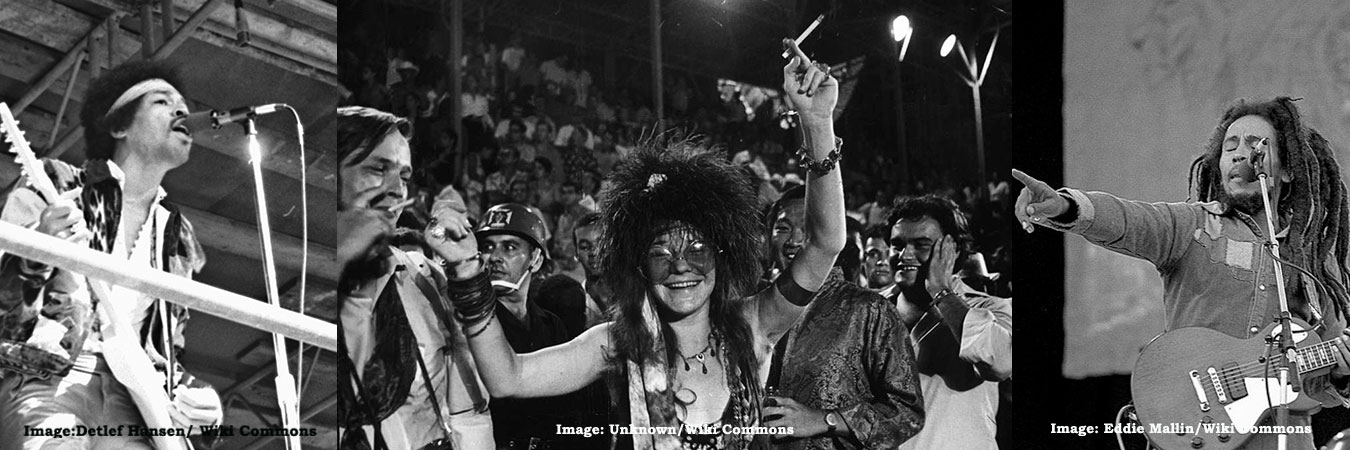
In recent years, there has been a significant transformation in the legal landscape surrounding marijuana. Once stigmatized and criminalized, cannabis is now experiencing a wave of acceptance and legalization across various parts of the world. Today, with many countries legalizing cannabis use- indica, sativa & hybrid strains are available in a range of products. You can choose from oils, tinctures, edibles, and vaping devices to the classic pipe or joint. This seismic shift did not happen overnight. It comes after a complex interplay of cultural, social, and political factors. Let’s take a look at the movements that paved the way for the legalization of marijuana.
The 1960s witnessed a powerful counterculture movement that challenged the prevailing societal norms. Woodstock, held in 1969, became an iconic symbol of this movement. Thousands of young people gathered to celebrate peace, love, and music. The event also became associated with the widespread use of marijuana. The counterculture rejected conventional values and, in turn, influenced a more permissive attitude toward recreational cannabis use.
Numerous bands and artists who performed at Woodstock became associated with the celebration of peace, love, and open use of marijuana. Woodstock thus became name a symbol of the counterculture movement. Here are some examples of bands that were part of Woodstock and played a role in popularizing marijuana:
The Grateful Dead, known for their improvisational and psychedelic rock, were an integral part of the 1960s counterculture. Their music was influenced by folk, blues, and jazz, creating a unique sound that resonated with the Woodstock audience. The band was associated with the use of marijuana, and their performances at Woodstock further solidified this connection. Their influence on counterculture extended beyond their music, as they embraced a communal ethos that included the shared experience of substances like marijuana.
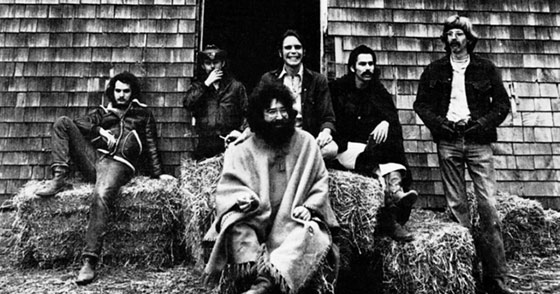
The Grateful Dead, photographed in December 1970.
Image Credit: Herb Greene/Wiki Commons
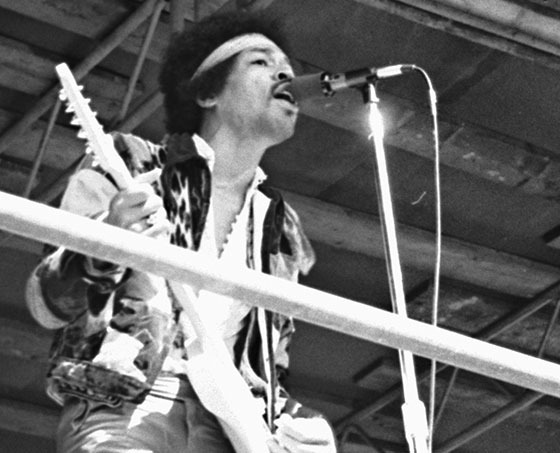
Jimi Hendrix performing at Jimi Beim Fehmarn Festival, 1970.
Image Credit: Detlef Hansen/ Wiki Commons
Jimi Hendrix was one of the most iconic guitarists of all time. He headlined Woodstock with his mesmerizing performance. His music, characterized by its innovative guitar work and experimental sound, was a staple of the psychedelic rock movement. His songs, such as Purple Haze, often hinted at drug use, and his association with marijuana was well-known.
The Jimi Hendrix performance at Woodstock included his electrifying version of the national anthem. His presence at Woodstock symbolized a rebellious spirit and experimentation, including the use of marijuana – in other words, everything that was Woodstock.
The Who’s energetic and rebellious performance at Woodstock left a lasting impact. As pioneers of rock opera, their music explored themes such as rebellion and youth culture. Songs like My Generation became anthems of the movement. The band image was close to the Woodstock spirit, which often included the open use of marijuana. Their presence at Woodstock only solidified their connection to the cultural shift that embraced alternative lifestyles and recreational cannabis use.
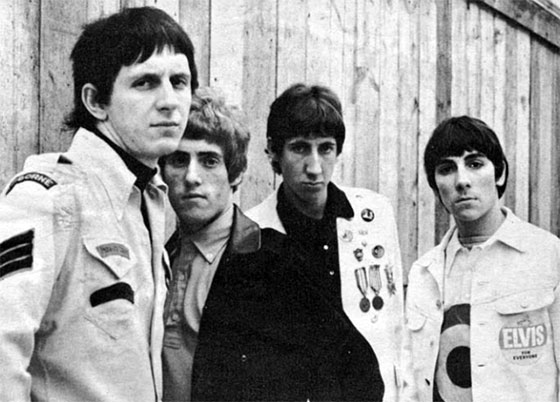
The Who in an early publicity shot from 1965.
Image Credit: KRLA Beat/Beat Publications, Inc/Wiki Commons
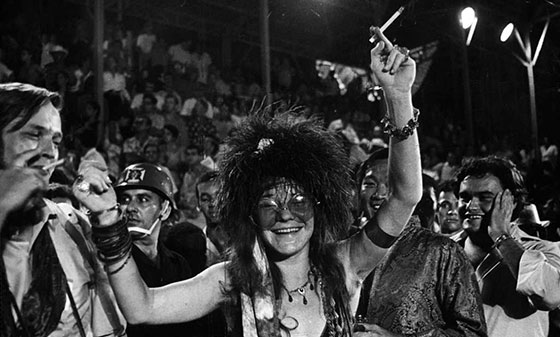
Janis Joplin in Brazil, 1970.
Image Credit: Unknown/Wiki Commons
Janis Joplin, known for her powerful blues-inspired vocals, was a prominent figure in the psychedelic and blues-rock scenes. Her raw and emotional performances resonated with the Woodstock audience, and her association with the counterculture was evident in her lifestyle and music. Songs such as Piece of My Heart reflected the turbulent and expressive nature of the times, and her openness about marijuana contributed to the cultural acceptance of weed.
These bands and artists, among others at Woodstock, became symbols of a generation that rejected conventional values and embraced a more permissive attitude toward recreational cannabis use. The festival served as a platform for these musicians to express and embody the counterculture ethos. As a result, it contributed to the broader cultural shift that ultimately influenced changing attitudes towards marijuana.
In the years following Woodstock, numerous bands continued to embrace and celebrate the use of marijuana, contributing to its broader cultural acceptance. While not an exhaustive list, here are some notable examples of bands that became associated with the popularization of marijuana post-Woodstock:
Reggae legend Bob Marley and his band Wailers gained international prominence in the 1970s. His music often featured themes of peace, love, and the spiritual use of marijuana. Songs like Kaya and Easy Skanking became anthems for the cannabis culture. His open advocation for spiritual and healing properties helped shape a positive image of marijuana in popular culture.
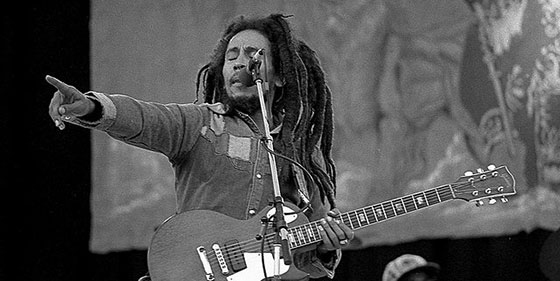
Bob Marley performing at Dalymount Park, 1980.
Image Credit: Eddie Mallin/Wiki Commons
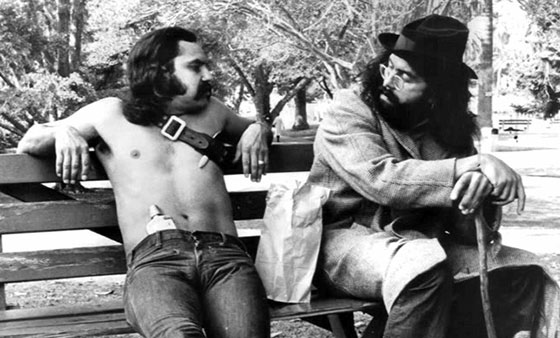
Publicity photo of the comedy team Cheech & Chong, 1972.
Image Credit: William Morris Agency/Wiki Commons
While not a musical band, the comedic duo of Cheech Marin and Tommy Chong became synonymous with marijuana culture in the 1970s. Through their stand-up routines and comedy albums, such as Big Bambu, Cheech and Chong depicted the recreational use of marijuana in a humorous fashion. Their stoner comedy films, including Up in Smoke, further solidified their association with cannabis in popular culture.
Emerging in the early 1990s, Cypress Hill became known for the fusion of hip-hop and rock. Members of the band were also outspoken advocates for marijuana legalization. Songs like Hits from the Bong became an anthem for the cannabis community. Their imagery and lyrical content embraced the use of marijuana, contributing to its mainstream acceptance.
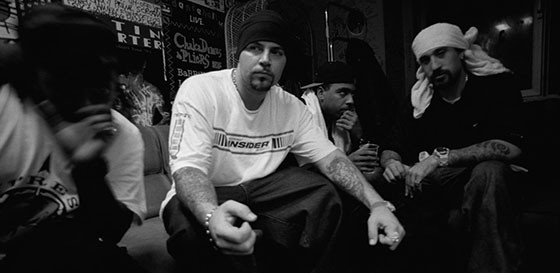
Cypress Hill on tour in Bonn, Germany,1998.
Image Credit: Mika-photography/Wiki Commons
Snoop Dogg, a prominent figure in West Coast hip-hop, has been a vocal advocate for marijuana throughout his career. His music often references and celebrates cannabis culture. His public persona and unapologetic embrace of marijuana have made him an influential figure in shaping perceptions around cannabis use.
Phish, a jam band formed in the 1980s, has cultivated a dedicated fan base with its eclectic musical style and improvisational live performances. Their association with the counterculture and their open discussions about marijuana have contributed to their image as a band aligned with alternative lifestyles.
Wiz Khalifa, a rapper known for his laid-back style and catchy tunes, has been a vocal advocate for marijuana legalization. His music often features lyrics that reference cannabis, and he has also launched his line of marijuana products. His influence extends beyond music, as he actively promotes the normalization of marijuana use in popular culture.
These examples illustrate how musicians from various genres have continued to play a role in shaping the cultural perception of marijuana in the years following Woodstock. Through their music, advocacy, and public personas, these artists have contributed to the ongoing cultural shift toward the acceptance and normalization of marijuana use.
The 1970s and 1980s period saw the emergence of the War on Drugs, a government campaign aimed at curbing drug abuse. It marked an escalation in the criminalization of drug offenses, including marijuana possession. However, as the years went by, public opinion began to shift. Increasingly, people questioned the effectiveness of strict drug policies and the heavy-handed approach to non-violent drug offenders.
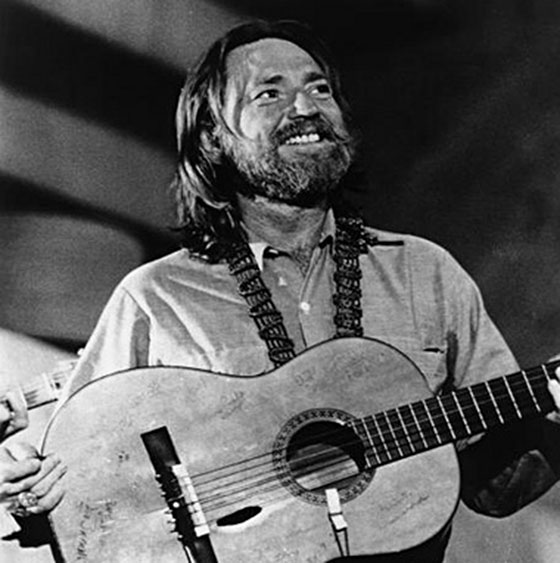
Willie Nelson promotional card by Columbia Records, 1974.
Image Credit: Columbia Records/Wiki Commons
One notable example of the changing public opinion regarding drug policies and the War on Drugs is the case of Willie Nelson in the 1970s.
Country music icon Willie Nelson found himself at odds with the law for marijuana possession in 1974. The incident occurred during a routine traffic stop in Texas, leading to the discovery of several pounds of marijuana on his tour bus. Nelson’s arrest highlighted the strict anti-drug stance of the authorities during the height of the War on Drugs.
What makes Nelson’s case significant is not just the arrest itself but the public reaction and his subsequent actions. Instead of retreating from the spotlight, Nelson openly addressed the issue, advocating for the decriminalization of marijuana. His arrest became a symbol of resistance against the stringent drug policies of the time.
The discovery of the potential medicinal benefits of marijuana played a pivotal role in altering perceptions. As research highlighted the therapeutic properties of cannabis in alleviating conditions like chronic pain, nausea, and seizures, public opinion began to shift in favor of medical marijuana. States started to pass laws allowing the use of cannabis for medical purposes, challenging the longstanding stigma associated with the plant.
A compelling example of the shift in public opinion toward medical marijuana is the case of Charlotte Figi, a young girl who suffered from a severe form of epilepsy known as Dravet syndrome. In the early 2010s, her parents turned to medical marijuana as a last resort after exhausting conventional treatment options.
They administered a cannabis strain high in CBD (cannabidiol) and low in THC (tetrahydrocannabinol), the psychoactive compound. The results were remarkable—Charlotte experienced a significant reduction in seizures. This story gained national attention, highlighting the potential therapeutic benefits of marijuana, particularly CBD, in treating certain medical conditions.
According to a survey published in the Journal of the American Medical Association (JAMA), around 88.3% of U.S. adults believe that marijuana has at least one medicinal benefit.
The 1990s and early 2000s witnessed the rise of advocacy movements pushing for marijuana legalization. Organizations like NORML (National Organization for the Reform of Marijuana Laws) and the Marijuana Policy Project worked tirelessly to change public opinion, influence legislation, and promote the idea that marijuana prohibition was doing more harm than good. Grassroots efforts and the tireless work of activists contributed to the growing momentum for change.
Polls conducted by organizations like Gallup and Pew Research Center consistently show a steady increase in public support for marijuana legalization. In 2000, only around 31% of Americans supported legalization. By 2021, this figure had risen to 68%.
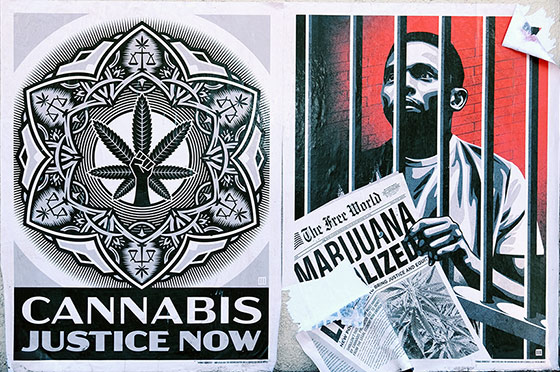
Colorado and Washington legalized recreational marijuana in 2012.
The breakthrough for marijuana legalization came at the state level. Starting with California in 1996, various states began passing laws allowing the use of medical marijuana. Subsequently, many states took steps toward full legalization for recreational use. Colorado and Washington became the first states to legalize recreational marijuana in 2012, setting the stage for a domino effect across the nation.
Cannabis for recreational purposes has gained legal status in 24 states, three U.S. territories, and the District of Columbia. Additionally, seven states have implemented decriminalization measures for marijuana use. In states where cannabis possession is legal, commercial distribution has been sanctioned (excluding Virginia and the District of Columbia).
According to a projection report by New Frontier Data, the legal cannabis market in the U.S. will reach $35 billion by 2025, with tax revenues benefiting states that have legalized marijuana.
The Cannabis Act, which came into effect on October 17, 2018, allows adults (18 years or older, depending on the province or territory) to legally purchase, possess, and use cannabis for recreational purposes. The Act regulates the production, distribution, sale, and possession of cannabis across the country.
Under the Cannabis Act, each province and territory has the authority to establish its regulations regarding the distribution and sale of cannabis. Regulations include determining the legal age for purchasing cannabis, setting rules for retail operations, and also where cannabis is allowed for consumption.
States that legalized marijuana have experienced positive economic impacts, from job creation to tax revenue. Simultaneously, the social perception of marijuana evolved as it became accepted. People began to view cannabis more as a substance of choice rather than a dangerous illicit drug, contributing further to the cultural shift.
Colorado is an example of the positive economic impact of marijuana legalization. After legalizing recreational marijuana in 2012, the state witnessed significant economic benefits. The cannabis industry created thousands of jobs, from cultivation to retail, decreasing unemployment rates.
Moreover, the state saw a substantial increase in tax revenue generated from the legal sale of marijuana products. State officials directed profits towards public initiatives like education and infrastructure projects. The economic success of Colorado’s cannabis industry served as a model for other states considering legalization.
Simultaneously, the social perception of marijuana in Colorado transformed. As the drug became destigmatized through its legal status, people began to view cannabis more as a personal choice rather than a dangerous illegal drug. The normalization of marijuana use contributed to a broader cultural shift, fostering an environment where the plant was increasingly accepted and integrated into mainstream society.
The legalization of marijuana reflects a profound cultural shift that has taken place over several decades. We’ve come a long way from the counterculture movements of the 1960s that changed public opinion! Thanks to evolving medical perspectives and successful advocacy efforts, the journey toward cannabis acceptance has been successful. As more states continue to reconsider their approach to marijuana, it is evident that the cultural shift surrounding cannabis has left an indelible mark on societal attitudes and legal frameworks.